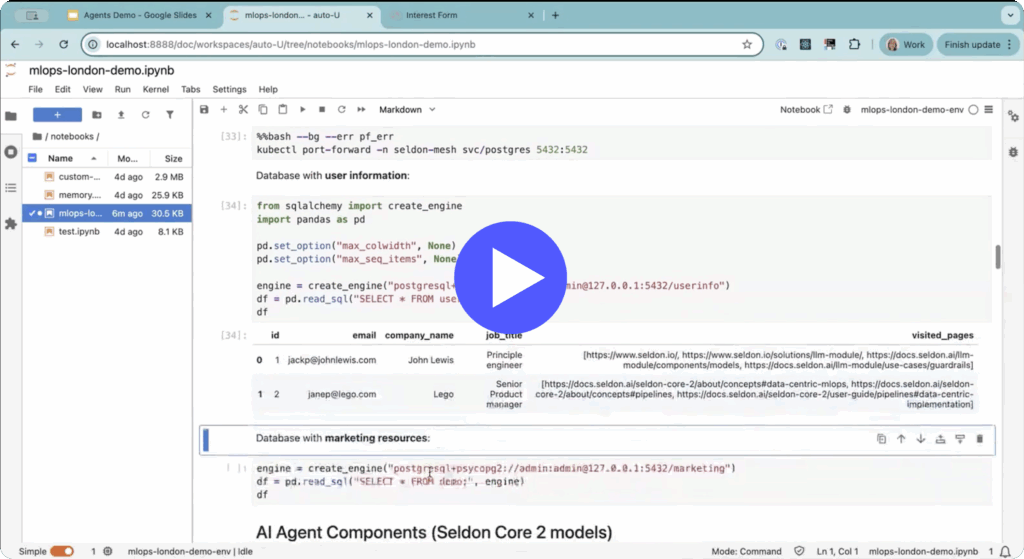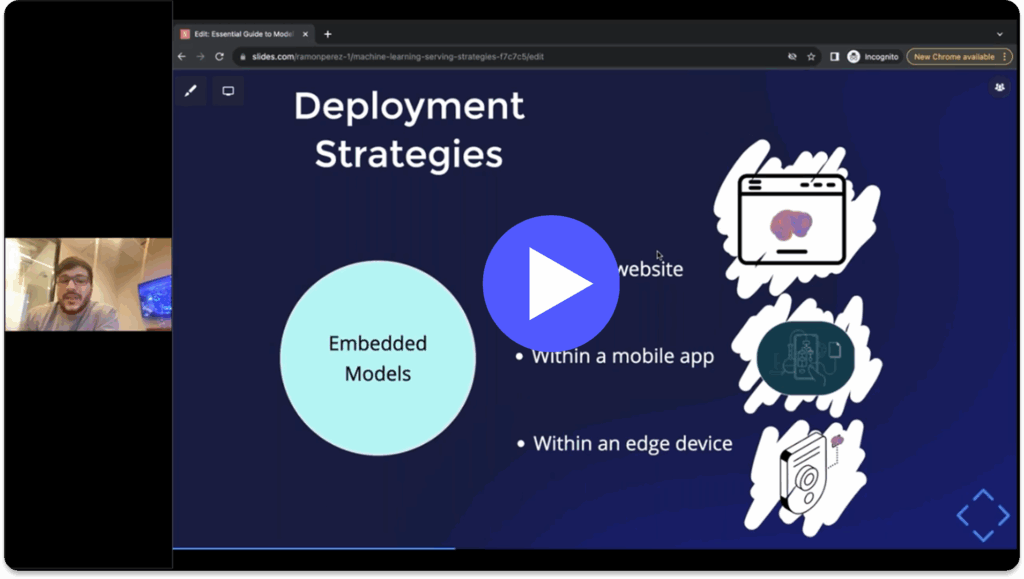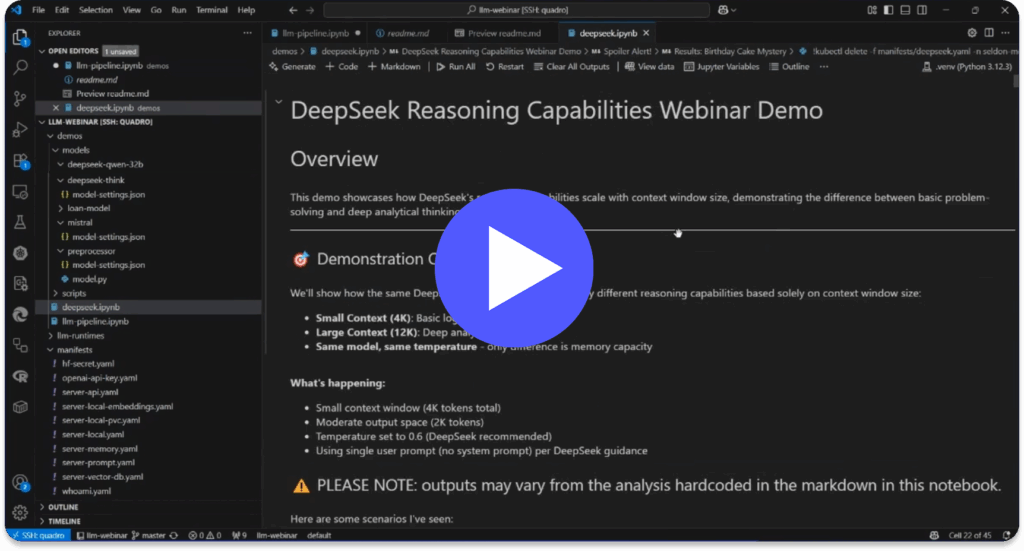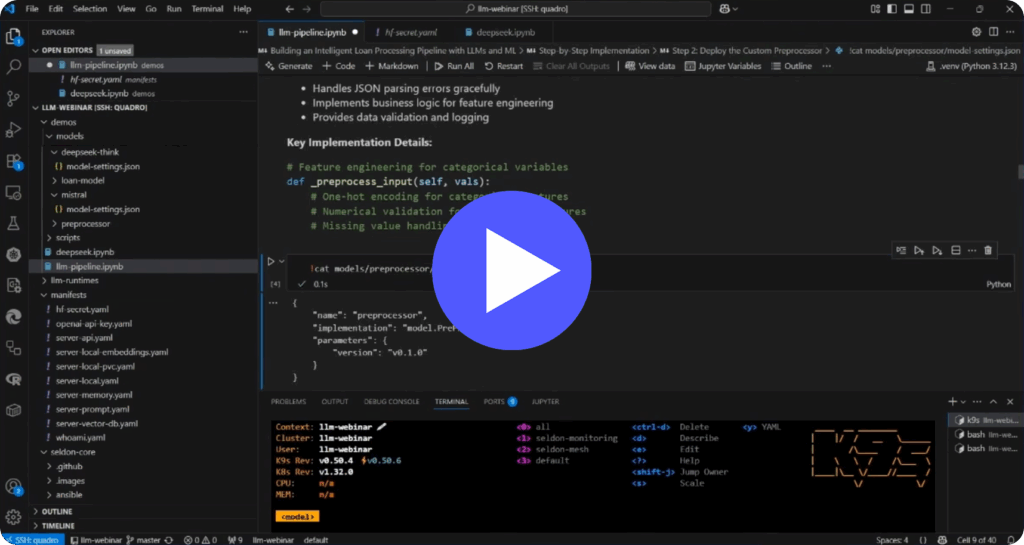Machine learning pipelines are used to optimize and automate the end-to-end workflow of a machine learning model. Core elements of the machine learning process can be refined or automated once mapped within a machine learning pipeline. As more and more organizations leverage the power of machine learning, models are developed and deployed within increasingly diverse settings. A machine learning pipeline helps to standardize this development, helping to build efficiency and model accuracy.
An important aspect of building pipelines is the process of defining each step as a unique module of the overall process. This modular approach helps organisations view models in a holistic way, helping to organise and manage the end-to-end process. But it also provides a strong foundation for the scaling of models, as individual modules can be upscaled or downscaled within the pipeline. In addition, the different stages of a machine learning pipeline can be repurposed and altered for use with a new model, making further efficiency savings.
Machine learning pipelines bring many benefits when building a machine learning model. Clearly mapped machine learning pipelines means parts of the sequence can be run automatically (such as data ingestion and cleaning) whilst data scientists focus on preparing other stages. Machine learning pipelines can also be run in parallel, improving the efficiency of the process. As each stage is clearly defined and optimized, the process can be easily scaled and pipelines can be reused, repurposed, and adapted to meet new model needs.
Improved end to end machine learning processes means faster delivery, more accurate models, and a better return on investment. Replacing manual processes means less human error, as well as faster delivery times. Tracking different versions of a model is also an intrinsic feature of a successful machine learning pipeline, which is a resource-intensive task if done manually. A machine learning pipeline also provides a common reference point across the whole process. This is important as the different complex steps within machine learning training and deployment are often headed by different specialists.
What is meant by a machine learning pipeline?
A machine learning pipeline is a series of defined steps taken to develop, deploy and monitor a machine learning model. The approach is used to map the end-to-end process of developing, training, deploying and monitoring a machine learning model. It’s often used to automate the process. Every stage of the machine learning process makes up a distinct module in the overall pipeline. Each component can then be optimised or automated. When building the machine learning pipeline, the orchestration of these different components is a major consideration.
Machine learning pipelines are cyclical, in that each stage is built and improved upon iteratively. The workflow is broken up into distinct modular stages, which are independent and can be optimized and improved. The machine learning pipeline then connects these distinct stages into a refined, more efficient process. It can be understood as a blueprint for machine learning model development. Once the machine learning pipeline has been designed and developed, elements can be improved, scrutinized, and automated. An automated machine learning pipeline is a strong tool to make the whole process more efficient. It is end-to-end, from the initial development and training of the model to the eventual deployment of the model.
Machine learning pipelines can also be understood as the automation of the dataflow into a model. This has links to the more traditional use of the data pipeline term within organisations. This guide focuses instead on the previous definition, one of modular steps in the whole machine learning model lifecycle, which spans every stage of a model’s development, deployment and ongoing optimization. A machine learning pipeline will also take into account static components like data storage solutions and the wider system’s environment. Machine learning pipelines are useful because they allow the process of machine learning to be understood and organized at a top-line level.
The process of developing and deploying a machine learning model spans many different teams, from the data scientists that train the model to the data engineers that deploy the model within the organization’s systems. A well designed machine learning pipeline ensures effective cooperation between different steps of the process. It’s linked to the concept of Machine learning operations (MLOps), which takes best practice elements of the more established field of DevOps to manage the entire machine learning lifecycle. MLOps can be understood as the best practice approach to the different elements of a machine learning pipeline. The MLOps life cycle covers training, deployment and the ongoing optimisation of the model. But the machine learning pipeline is a product in itself, a mapped blueprint for machine learning model development which can then be automated or reused.
Why are machine learning pipelines needed?
The purpose of a machine learning pipeline is to outline the machine learning model process, a series of steps which take a model from initial development to deployment and beyond. The machine learning process is a complex one which spans different teams with different skills. Manually taking a machine learning model from development to deployment is a time consuming task. Outlining the machine learning pipeline means the approach can be refined and understood at a top-down level. Once outlined in a pipeline, elements can be optimized and automated to improve efficiency of the whole process. The entire flow of the machine learning pipeline can be automated in this way, freeing up human resources to focus on other considerations.
As the machine learning lifecycle covers many different teams and areas, the pipeline acts as a common language of understanding between each team.
Each stage of a machine learning pipeline must be clearly defined so that it can be built up and can be reused in new pipelines. This reusability is a strength as existing machine learning pipelines can be repurposed, saving time and resources with new machine learning models. Each specific part of the pipeline can be optimised to be as efficient as possible.
For example, a stage of the pipeline normally includes the collection and cleaning of data at the beginning of the machine learning lifecycle. All aspects of the stage are considered, including the movement and flow of data and the cleaning of it too. What may originally have been a manual process can then be refined and automated once it has clearly been defined. For example, the detection of outliers within data could be automated with clear triggers within the relevant part of the machine learning pipeline.
Individual steps can be removed, updated, altered or improved.
The benefits of a machine learning pipeline include:
- Mapping a complex process which includes input from different specialisms, providing a holistic look at the whole sequence of steps.
- Focusing on specific steps in the sequence in isolation, allowing the optimization or automation of individual stages.
- The first step in transforming a manual process of machine learning development to an automated sequence.
- Providing a blueprint for other machine learning models, with each step in the sequence able to be refined and changed depending on the use case.
- Solutions are available for the orchestration of pipelines, to improve efficiency and automate the steps.
- Easily scalable, upscaling modular parts of the machine learning pipeline when needed.
The architecture of a machine learning pipeline
It’s useful to understand the common machine learning pipeline architecture before starting the build. Overall, the components of the machine learning pipeline will be the series of steps taken to train, deploy and continuously optimise the model. Each individual section is a module that is outlined and explored in detail. The machine learning pipeline architecture also includes static sections like the data storage or archives for version control.
Depending on the type of machine learning model that’s used or the different final uses of the model, each machine learning pipeline will look different. For example a regression model such as predictive models used in finance will have a different pipeline to unsupervised machine learning model used to cluster customer data. Especially as different organizations have different system structures and architectures. But generally, a machine learning pipeline will move between similar distinct phases, mirrored by the machine learning process. This covers initial data ingestion and cleaning, to preprocessing and model training, before final model tuning and deployment. It will also include a cyclic approach to machine learning optimization in post-deployment, closely monitoring the model for issues like machine learning drift before triggering retraining.
Common sections of the machine learning pipeline include:
- Data collection and cleaning
- Data validation
- Training of the model
- Evaluation and validation of the model
- Optimization and retraining
Each step should be clearly defined so it can be understood, optimized and if possible automated. Tests and checks should be included in each specific stage of the pipeline, triggers that can often be automated too. In addition to these different stages, the machine learning pipeline architecture will include static elements such as the data and feature storage, as well as different model versions.
Examples of the more static elements of machine learning pipeline architecture include:
- Feature storage
- Data and metadata storage and data pools
- Model version archives
Steps when building machine learning pipelines
Depending on the use case of the machine learning model and the organization itself, every machine learning pipeline will be different to some extent. However, as the pipeline usually follows a normal machine learning lifecycle, there are the same considerations when building any machine learning pipeline. The process begins by considering the different stages of the machine learning process, isolating each step into different modules. A modular approach makes it easier to concentrate on the machine learning pipeline’s constituent parts, and allows a focusing on improving each element in turn.
The machine learning pipeline architecture should then be mapped with the more static elements like data and feature storage. Next, the flow of the machine learning pipeline must be established, or how the process will be orchestrated. This includes setting the sequence of modules, and the flow of input and outputs. Finally, each element of the machine learning pipeline should be scrutinized and optimized, and where possible automated.
The four steps to building machine learning pipelines should include:
- Isolate each specific step in the machine learning lifecycle into different modules.
- Map the more static elements within the machine learning pipeline architecture such as the metadata storage.
- Organize the orchestration of the pipeline.
- Optimize and automate each step of the machine learning pipeline. Embed testing and evaluation techniques to validate and monitor each module.
Transform each step into separate modules
The first step is to work through each stage of the machine learning lifecycle, defining each stage as its own module. This begins with the data collection and processing, stemming to model training and finally deployment and optimization. Each step should be clearly defined so that modules can be focused on and improved in turn. Stages should be limited in scope so that each stage is clearly defined so improvements can be made with clarity.
Map the architecture
The overarching machine learning pipeline architecture should then be mapped, including the more static elements that each stage interacts with. These static parts could be an organization’s data storage pools, or an archive for version control. The system architecture of the organization as a whole can also be considered, to best understand how the machine learning model will sit within the wider system structure.
Orchestrate the machine learning pipeline
How distinct steps within the pipeline architecture work together should then be orchestrated. This includes setting the data flow, the direction of inputs and outputs, as well as the sequence the modules should take. There are machine learning pipeline orchestration tools and products available, which help to automate and manage the overall lifecycle. For example, Seldon Deploy can be used to manage and orchestrate the machine learning process. For containerized pipelines, solutions can use Kubernetes to orchestrate and manage containers.
Optimise and automate
Optimizing and automating the machine learning pipeline is the overall goal for this approach. By mapping out the process into easy-to-understand modules, elements can be optimized and the overall process automated. The machine learning pipeline itself is usually automated, cycling through iterations using the outlined machine learning architecture. With testing and validation automated within the process, models can be triggered to retrain automatically too.
Take Control of Complexity With Seldon
With over 10 years of experience deploying and monitoring more than 10 million models across diverse use cases and complexities, Seldon is the trusted solution for real-time machine learning deployment. Designed with flexibility, standardization, observability, and optimized cost at its core, Seldon transforms complexity into a strategic advantage.
Seldon enables businesses to deploy anywhere, integrate seamlessly, and innovate without limits. Simplified workflows and repeatable, scalable processes ensure efficiency across all model types, while real-time monitoring and data-centric oversight provide unparalleled control. With a modular design and dynamic scaling, Seldon helps maximize efficiency and reduce infrastructure waste, empowering businesses to deliver impactful AI solutions tailored to their unique needs.
Talk to our team about machine learning solutions today –>






